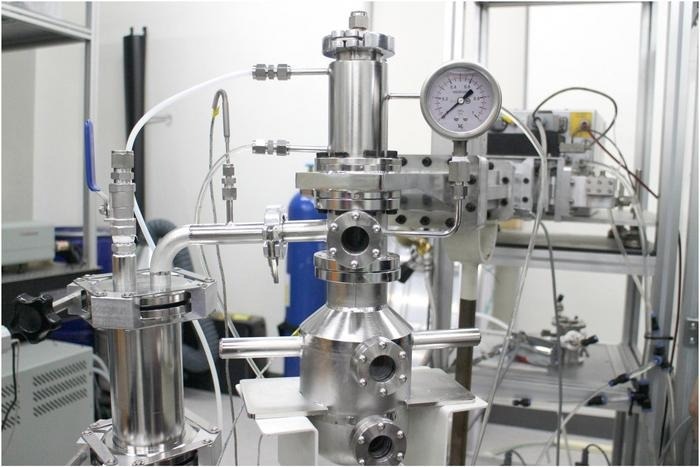Feb 19 2024
Recently published research suggests that using plasma technology to extract lithium can be done more effectively.

Plasma Lithium Mineral Carnobation Device. Image Credit: Korea Institute of Fusion Energy (KFE)
The Korea Institute of Fusion Energy (KFE) announced that its researchers had successfully applied CO2 microwave plasma technology to increase the lithium extraction rate by three times over previous methods.
Lithium can be extracted most commonly by adding sodium carbonate (Na2CO3) to saltwater containing lithium and then extracting lithium carbonate (Li2CO3), which is a carbon dioxide and lithium mixture. This method's drawback is that it necessitates a second step to distinguish lithium carbonate from sodium contaminants that mingle during the extraction procedure.
Sodium carbonate can be substituted with carbon dioxide gas in an alternate procedure. The problem with this approach is that brine containing lithium salt (a compound that combines lithium and chlorine) has low extraction rates. To solve this problem, more research is needed.
To speed up the extraction of lithium, Doctors Ji Hun Kim and Jong Keun Yang of the KFE used carbon dioxide microwave plasma technology, which ionizes carbon dioxide into a plasma state.
Experimental comparisons between carbon dioxide plasma lithium extraction and existing brine-based lithium extraction methods were made by KFE researchers. According to the study, applying plasma technology resulted in a three-fold increase in extraction rates.
In experiments utilizing carbon dioxide plasma, the lithium extraction rate reached 27.87 %, while direct injections of carbon dioxide gas yielded 10.3 % lithium extraction rates.
This is the first study to show that using plasma technology to accelerate the extraction of lithium can increase extraction rates. The article was published in DESALINATION, a reputable scholarly journal in the water resources domain.
It was possible to confirm the effects of the heat and ions, electrons, radicals etc. that are generated when carbon dioxide plasma forms on lithium extraction rates. We plan to expand research into plasma lithium extraction processes through additional research into carbon dioxide plasma reactions.
Dr Jong Keun Yang, Study First Author, Korea Institute of Fusion Energy
Scientists believe that plasma-based methods for extracting lithium from seawater with low lithium concentrations could be a novel way to develop technology that can extract lithium from seawater more effectively.
This research shows a new possible use for plasma technology, which has been used extensively in cutting-edge fields such as semiconductors. Lithium obtained from seawater is a crucial component of fusion energy generation, and we will continue to conduct research into both fusion energy development and fusion energy fuel acquisition.
Suk Jae Yoo, President, Korea Institute of Fusion Energy